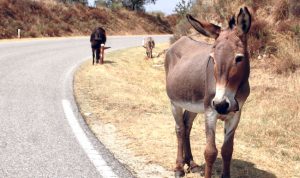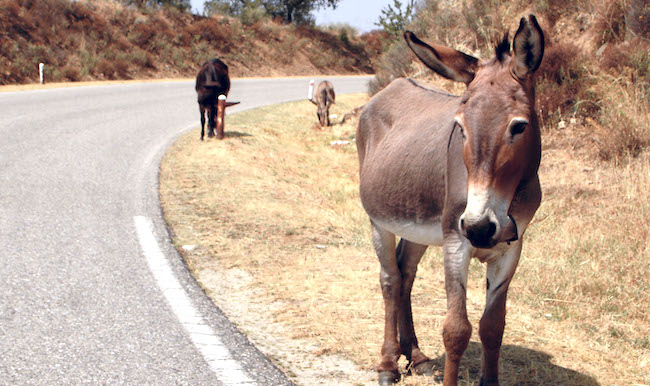
The Mitzvah: The Torah commands an Israelite to redeem the first issue of his donkey with a lamb or kid. The owner “redeems” his animal by giving a lamb in lieu of his donkey, or the monetary equivalent, to the priest. The owner cannot gain any benefit from this animal. If the donkey is not redeemed, it has to be killed by axing the back of its neck (Exodus 13:13).
The sanctity of a firstborn relates to the precursor to the Exodus: the Tenth Plague that struck the Egyptians. All the firstborns were killed on that fateful night with the exception of the Jewish firstborns. As a result, the firstborns – both man and kosher animal – were sanctified before G-d.
Curiously, the only non-kosher animal subject to the laws of a firstborn is the donkey.
The promiscuous climate of Egypt is synonymous with that of the donkey; in the words of the prophet, “whose flesh is the flesh of donkeys” (Ezekiel 23:20). The word chamor, donkey is symbol of chomor, materialism, of unbridled indulgence in animalistic, physical desires unchecked or governed by the intellect to give it direction, form and purpose.
The donkey is a non-kosher, lowly animal. And the Jewish nation in Egypt descended to a spiritual low – down to the forty-ninth level of spiritual impurity. Almost at the point of no return, nevertheless they were not “irredeemable”. This is in line with the principle that a person should never despair from achieving divine mercy. With repentance, the penitent is able to catapult himself onto a higher echelon than the complete righteous (Talmud, Berachos 34).
The juxtaposition of this mitzvah to the Exodus recalls the Death of the Firstborn. This mitzvah symbolically captures the transformation of the Jewish people in the run up to their redemption.
The “Egyptian” donkey is redeemed by the lamb, a kosher animal that is an analogy for Israel tendered by their Heavenly Shepherd (Ezekiel 34:31; ibid 36:37-38). Their sanctity came to the fore in their “redemption” from Egypt wherein they revoked their “materialistic” donkey-like status upon becoming the chosen nation – with a new “form” living with Torah and mitzvos acknowledging “G-d is My Shepherd” (Psalms 23).
Should the owner refuse to redeem his animal, the donkey is to be axed from the back of the neck, the nape. Noam HaMitzvos explains that this symbolizes the wicked that are “stiff-necked” (see e.g. Exodus 33:3: “you are a stiff-necked people) and their unwillingness to repent from their misdeeds. The wicked are “dead” from a spiritual perspective even when still alive (See Talmud Berachos 18). In the same way that it is forbidden to stare at an evil man (Talmud Megillah 27), accordingly, the irredeemable donkey that will not be transferred into a sheep, is killed from behind making it unnecessary to see its face.
One cannot just “drop the dead donkey”. Every one of us has the ability to draw away from our past sins, to sanctity ourselves as the holy firstborn – the Jewish nation itself called G-d’s Firstborn (Exodus 4:22). However low we may have fallen, we are never irredeemable. With repentance and the transition, we sanctify ourselves and await the future impending redemption from our present exile.
This week’s class is dedicated to the memory of my wife’s grandfather R’Yehoshua Pruwer (R’Yehoshua ben Reb Dovid) who passed away on 23 Teves 5766 Text Copyright © 2006 by Rabbi Osher Chaim Levene and Torah.org.


